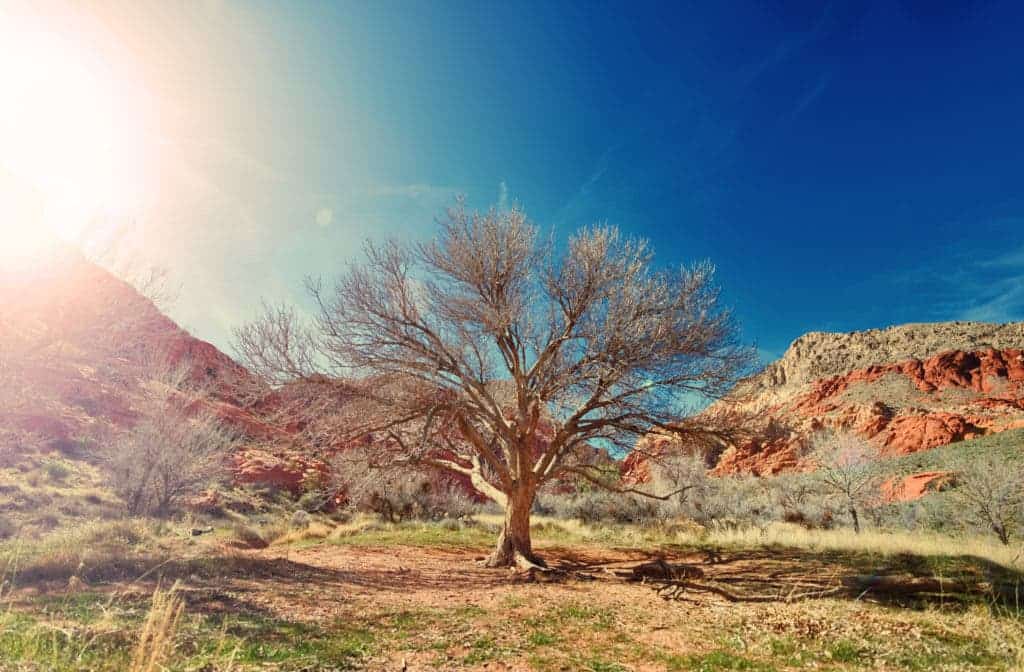Southern Europe may become a desert by the end of the century if we don’t move to reduce emissions, warns a newly published paper.

The Mediterranean coast is a touristic powerhouse, drawing tourists from around the world with its mild climate, good food, and clear waters. But this may well change by the end of the century, warn Joel Guiot, a palaeoclimatologist at the European Centre for Geoscience Research and Education in Aix-en-Provence, France and Wolfgang Cramer, of the Mediterranean Institute for Biodiversity and Ecology. The whole of Southern Europe could become a desert, according to their study, if the climate continues to warm up.
“With 2 degrees of warming, for the Mediterranean we will have a change in the vegetation which has never been known in the past 10,000 years,” said lead author of the study Joel Guiot.
The duo studied pollen cores retrieved from lake mud sediments deposited over the last 100 centuries (roughly equivalent to the Holocene, the geological epoch we’re living in). Because vegetation is closely tied to environmental conditions, they could use pollen to get an idea of how climate shifted over the investigated period. More oak pollen, for example, suggest periods of humid and mild climate, while finding more fir or spruce would point to chillier conditions.
With this data, they built a model of past vegetation (and climate) in the Mediterranean, which they then ran through four predictions taken from the UN’s climate change panel, the IPCC. They found that under a business-as-usual model, the Med’s ecosystems would change beyond anything they’ve been like in the Holocene. Barring a dramatic reduction in emissions, which the team believes is “extremely ambitious and politically unlikely”, Southern Europe will see a dramatic increase in desert areas. Even if the Paris pledge of keeping climate change under 1,5 degrees Celsius is met, the region will experience a “substantial” expansion of deserts.
“Everything is moving in parallel,” Guiot told Nature. “Shrubby vegetation will move into the deciduous forests, while the forests move to higher elevation in the mountains.”
Needless to say, propelling your flora and fauna some 10 millennia back into the past is a pretty bad move. It would take ecosystems back to the state they were before the start of Western Civilization in less than a hundred years. This change will have far-reaching impacts, starting with an unprecedented economic downturn.
Much of Southern Europe relies on the Mediterranean for tourism. Cities like Lisbon, Portugal, or Seville, Spain see millions of tourists per year — who come for the food, the scenery, the history but most of all, the climate. Both these cities have distinct wet and dry seasons (like the coast of California), and the dry summer is the height of the tourist season. But as temperatures push into uncomfortable figures, fewer and fewer tourists are going to come visit.
That’s bad for the economy but not devastating. However, with warmer climates crops will dry out, water systems will be put under huge strain, and as we’ve seen in California, the lack of precipitation during the wet season will cause drought and promote wildfires. Guiot said that these fires, along with the drought and heat will lead to food shortages and, like in Syria in 1998 and 2010, political upheaval and civil war.
“It’s not just climate — political organization is important as well,” Guiot told Inside Climate News.
“But if you amplify a problem of war with the problem of climate, the consequence can be more important.”
The full paper “Climate change: The 2015 Paris Agreement thresholds and Mediterranean basin ecosystems” has been published in the journal Science.


